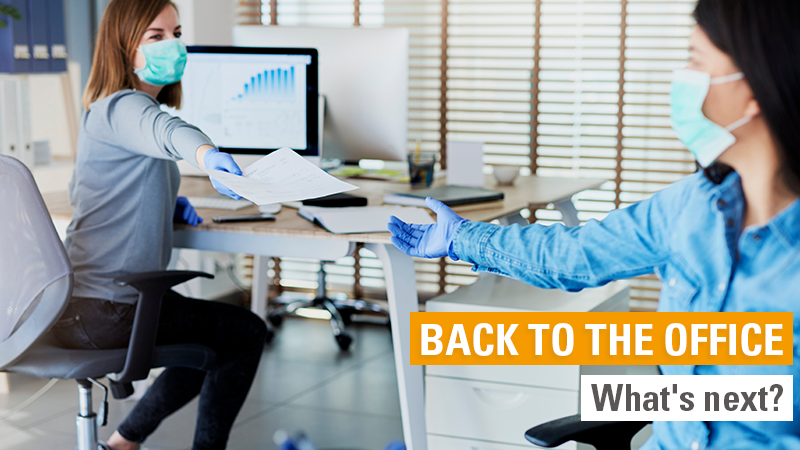With the current relaxations in public life, more and more workers are returning to their offices. For many, working from home functioned surprisingly well – provided that their employer’s ITC structure played along. Meanwhile, it turns out that an increasing number of employees want to return to work. Some are suffering the stress of working in parallel to having to supervise children and homework, others are finding it difficult to separate work and private life. But most of all people are apparently missing the personal contact with their colleagues and the creative exchange of ideas.
When employees return to the office, employers are obliged to observe the “SARS-CoV-2-Work Protection Standards”. Although this is not actually based on legislation, employers can be liable for consequences in the event of damage to the employee. First and foremost, a safety distance of at least 1.5 meters must be observed. By staggering attendance, contacts in the office can be reduced – although where contact is unavoidable, it is recommended to wear protective masks. The now familiar hygiene measures – disinfectant dispenser and frequent handwashing – are mandatory. And anyone who displays symptoms of the sickness or who belongs to a risk group should stay at home or be accorded particular protection.
Integrating the home workplace into everyday working life
The Coronavirus is far from being “defeated” – which means that we probably need to reckon with spending at least a part of our time in the home workplace in the future. One possible solution for this could be the principle of “rolling attendance”, which is already being practiced in some companies – a part of the team remains in the home workplace, while the other part works in the office.
Politicians are currently discussing the question of whether employees actually have a right to a home workplace. A few weeks ago, German Federal Minister Hubertus Heil presented the concept of a possible “right to a home workplace” by law. According to this, every employee should be able to demand the right to work from home, if this is feasible from the company’s point of view. However, it is still unclear whether the right to a home workplace will actually come into force and to what extent it is feasible. For this “teleworking workplace”, as it is known, the employee must observe certain economic and spatial requirements, in order to ensure that the employee’s health is not endangered. This of course means increased obligations for the employer – and the provision of the appropriate ITC infrastructure to guarantee integration of the teleworking workplaces into the company’s IT structure.
The concept of the digital workplace receives a significant boost
Companies are also interested in minimizing the risks for their staff – which means that many will allow their employees to work as much as possible from their home workplace. Splitting up employees into project teams who work in satellite offices, for example, is another option for restricting contact. Experts assume that some companies will even invest in new workplace models – so that they will already be equipped for a possible subsequent pandemic, but also for economic reasons. One can therefore assume that companies will soon be more likely to invest in new business models, working methods and digitization, instead of paying high rents for real estate. The concept of the digital workplace will thus receive a significant boost.
Those responsible in companies whose employees were difficult or impossible to connect to the company’s IT during the lockdown weeks will not forget this shortcoming and, if possible, upgrade and adapt their IT and ITC infrastructure. In the medium term, this will definitely trigger a digitalization boom for the ITC sector.
Office workplaces must become more digital
After everything we are seeing right now, the majority of the office workplaces will become more digital, more distributed and more mobile after the Corona crisis. To respond to the needs of employers and employees alike, it must be possible to perform work as independently as possible from a physical presence at the classic scenario of a desk, PC and telephone. The technical requirements for an independent scenario have long been available – with its UCC telephone system and solutions, STARFACE offers, in addition to modern business telephony, access to other communication channels such as chat, functions such as document sharing and video meetings. All of this serves as the basis for efficient and future-proof corporate communication – in the office, on the go on your smartphone and in the home workplace. Only now does it become clear what the existential added value of a functioning Communication and Collaboration environment (=UCC) represents for a company.
With all the technical, organizational and hygiene measures, it is important that employees do not lose sight of their community spirit and the identification with their company. A healthy mixture of home office and office workplace should therefore be aimed for, in order to maintain the exchange between colleagues and to support the sense of unity with individual employees.
